Image
gallery: Fun with movement in polar photomicroscopy.
by David Walker, UK.
In many
still photography genres, the intentional incorporation of movement
is widely used. For example, the use of low shutter speeds to show ethereal effects
of moving water, light trails of vehicles on busy roads in the dark,
in sports or other human activity to show some degree of movement. Not surprisingly, intentional
movement doesn't seem to be
used to a similar extent in still photomicrography; getting the subject as sharp as possible is usually a prime
requirement!
But in one of my
sillier moments, perhaps attributable to a long dreary winter in northern England,
I had a play with low shutter speeds on my microscope combined
with subject movement to see what sort of effects can be created with a selection
of prepared slides. The failure
rate was high, so ideally suited to digital photography where the instant
no cost results can be rapidly assessed and mostly binned!
The most successful
images showing movement seemed to be those with a good colour palette but simple
structures e.g it suited subjects like crystals that were 'active' under 'crossed
polars'. Slides with recognisable structure such as insects
and plant sections didn't seem to work too well, for me at least.
'Fuzzy' photomicrographs
clearly have little to no scientific merit and those below don't
pretend to have much artistic merit, but heh,
hobbies should have a 'silly but fun factor' and it was fascinating to see what could be created. When
the images sort of worked, I found it more satisfying
than manipulating a still image with one of the many effects
available in photo-editing software as the
images were created solely under the microscope.
Images with rotational
movement seemed to be more pleasing than those using the x and y controls
of a mechanical stage and all the images below used some degree of rotation. The lighting intensity
was typically set for an exposure of 2 - 6 seconds to allow a long enough time
frame for some control of the movement. I first tried quite extensive rotation
throughout the exposure but that created mainly smeared circles of unsaturated
colours with no structure.
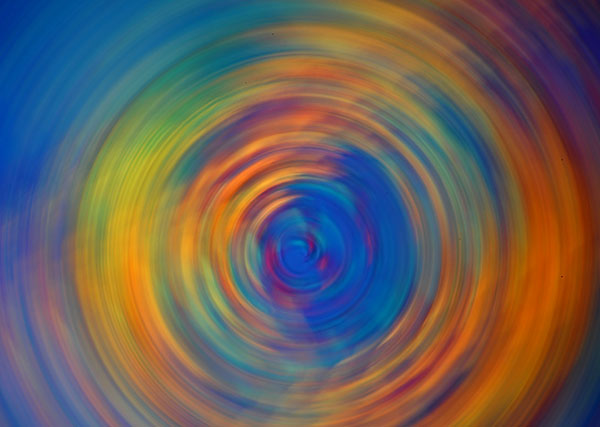
Palate
of Haliotis, unnamed Victorian mount. Zeiss 6.3/0.08 planachro objective. 4 sec.
Continuous
rotation of subject during exposure to illustrate the low contrast, smeared
effect.
Not sure if these sort of images
had much appeal as all structure was lost.
More pleasing images,
to the author at least, were created by keeping the subject
still at least once during the exposure to give some structure, with variations
of movement included during the rest of the exposure. See examples below.
Areas of black in the
still image didn't always create satisfying images on rotation, so a full
wave retarder was used with the crossed polars to minimise this. The images
below used this method, with various magnifications. Apart from tonal
balance adjustment where needed and resize with sharpening, all images were
the full camera field 'out of camera'. Using the
camera's RAW mode if it has one is useful, as gives a stop or so either way
to correct the exposure. This is handy as if an image is liked but the exposure
is slightly wrong, it can be tricky recreating the exact same effect.
Comments to
the
author David
Walker
are welcomed.
Acknowledgement: With thanks to John Wells who made the Biosil
slides and for which the images below heavily relied on.
Images
(All
taken with a Nikon digital SLR, ISO 100 - 200)
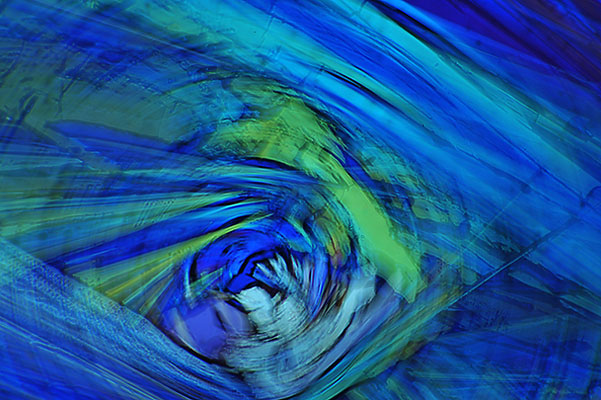
Musk
ketone melt, Biosil preparation. Zeiss 10/0.22 planachro objective.
2.5 secs.
Two stationary phases in exposure with quite quick rotation
through ca. 45 degree angle between each.
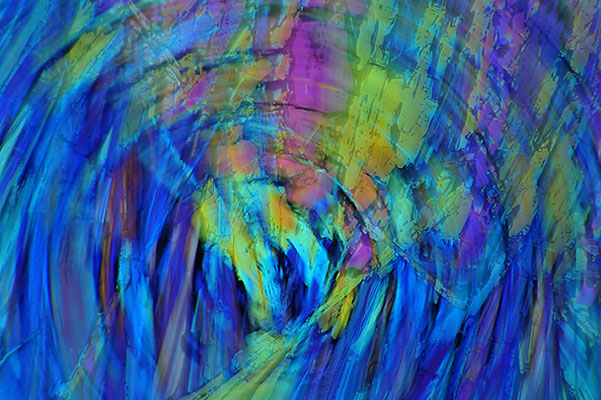
As
above, different area of slide.
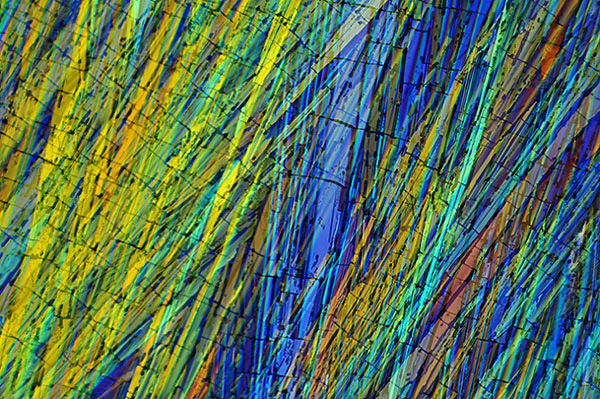
As
above. 2.5 secs. Two stationary phases in exposure with rapid rotation
through shallow angle between each i.e no rotational smearing seen.
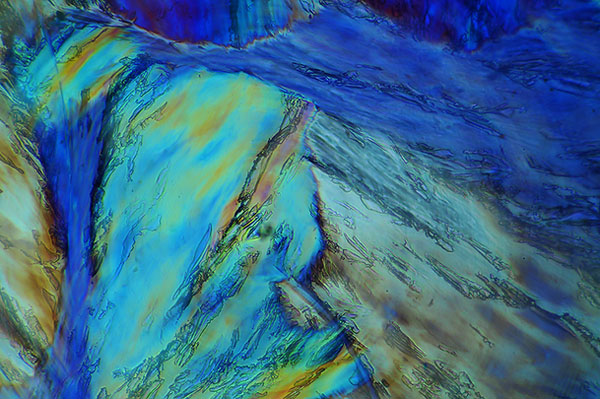
Palmitic
acid, Biosil slide. Zeiss 6.3/0.18 planachro objective. 2.5 sec.
Two stationary
phases in exposure with rapid rotation through larger angle between
each.

Hoof
of goat, unnamed Victorian mount. Zeiss 6.3/0.18 planachro objective. 2.5
sec.
One stationary phase in exposure with slow rotation through large angle.
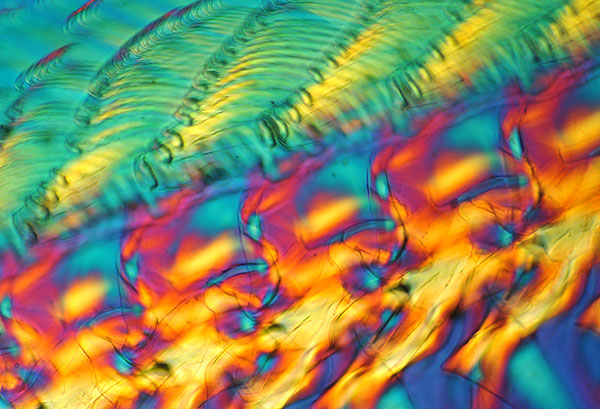
Palate
of Haliotis, unnamed Victorian mount. Zeiss 6.3/0.18 planachro objective. 4 sec.
In
this image, quick step changes in rotation were made throughout the exposure.
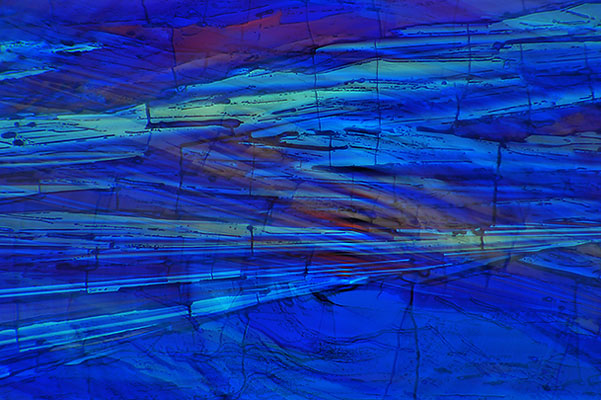
Musk
ketone melt, Biosil preparation. Zeiss 10/0.22 planachro objective. Nikon DSLR,
2.5 secs.
Two stationary phases in exposure with slow rotation through
shallow angle between each.
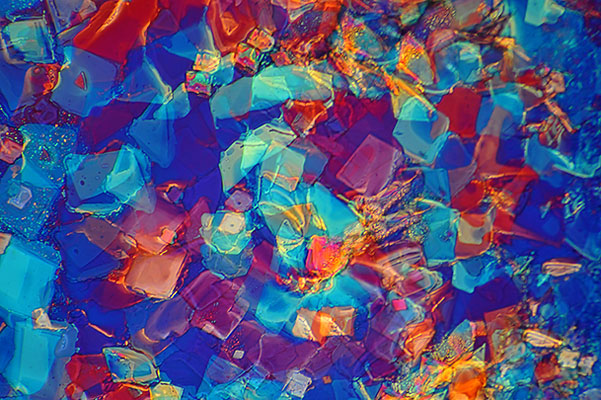
Potassium
chlorate, Biosil slide. 4 secs, two stationary phases with rapid rotation with
a shallow angle between them.
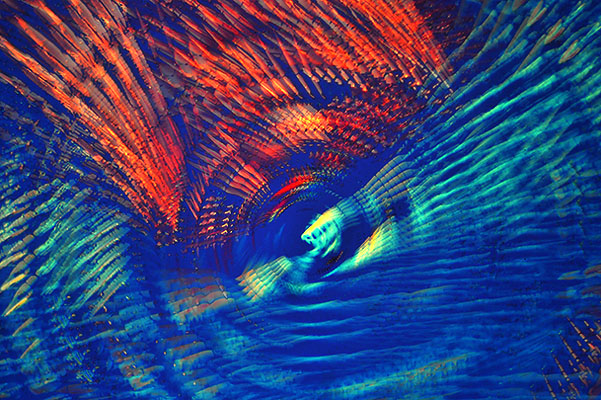
Glycine,
Biosil slide. Zeiss 6.3/0.18 planachro objective. 6 secs, stepped rotational
changes with shallow angle.
©
Microscopy UK or their contributors.
Published
in the February 2008 edition of Micscape.
Please
report any Web problems or offer general comments to
the
Micscape
Editor
.
Micscape
is the on-line monthly magazine of the Microscopy UK web
site at
Microscopy-UK
©
Onview.net Ltd, Microscopy-UK, and all contributors 1995
onwards. All rights reserved.
Main site is at
www.microscopy-uk.org.uk
with full mirror
at
www.microscopy-uk.net
.









